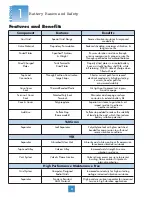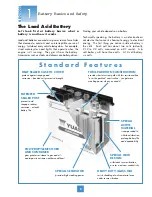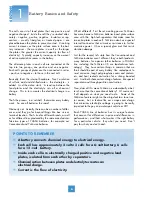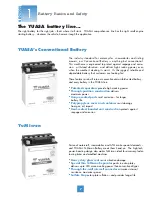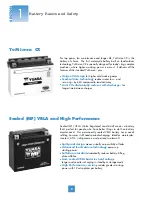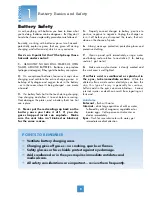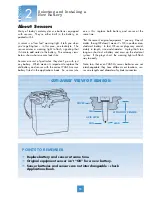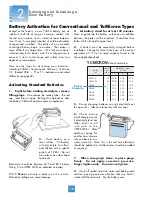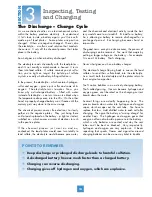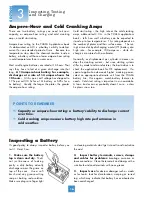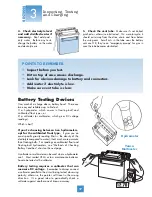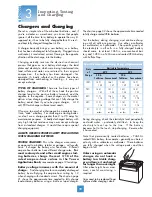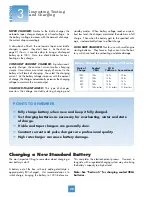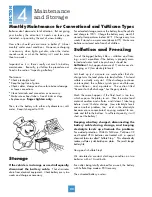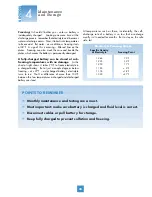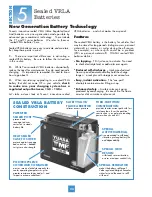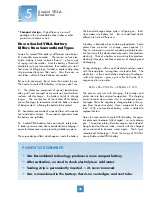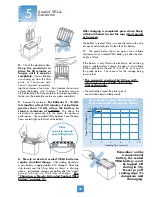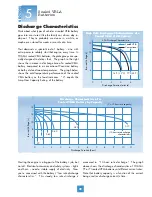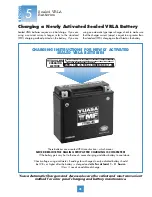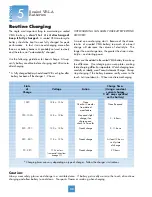
4. Check electrolyte level
and add distilled water if
necessary.
Don’t add acid –
only water. Before any tests,
charge the battery so the water
and electrolyte mix.
5. Check the vent tube.
Make sure it’s not kinked,
pinched or otherwise obstructed. On a motorcycle, it
should exit away from the drive chain and from below
the swing arm. Small cuts in the tube near the battery
vent are OK; they’re an “emergency escape” for gas in
case the tube becomes obstructed.
POINTS TO REMEMBER
❐
Inspect before you test.
❐
Dirt on top of case causes discharge.
❐
Look for obvious damage to battery and connectors.
❐
Add water if electrolyte is low.
❐
Make sure vent tube is clear.
Battery Testing Devices
How much of a charge does a battery have? There are
two easy and reliable ways to find out:
1) a hydrometer, which comes in floating ball and
calibrated float types, or
2) a voltmeter (or multimeter, which gives DC voltage
readings).
Which is best?
If you’re choosing between two hydrometers,
opt for the calibrated float type.
It gives you an
exact specific gravity reading (that is, the density of the
electrolyte compared to water); that’s much more accurate
than floating balls. For readings on calibrated float and
floating ball hydrometers, see “Methods of Checking
Battery Condition” chart on the next page.
A voltmeter or multimeter can be used where a hydrometer
can’t. Most sealed VRLA or low maintenance batteries
have to be tested with a voltmeter.
Battery testing requires a voltmeter that can
measure DC voltage.
Remember to always connect
a voltmeter parallel to the circuit being tested, observing
polarity; otherwise, the pointer will travel in the wrong
direction. It’s a good idea to periodically check a
voltmeter against another one of known accuracy.
Hydrometer
Yuasa
Multimeter
17
3
SECTION
Inspecting, Testing
and Charging
Summary of Contents for SmartShot Automatic 12V 1.5 Amp 5 Stage
Page 1: ......


